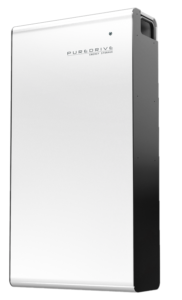With the rise in fuel costs and clean air zones, paired with the government’s plans to make a greener Britain by banning the sale of new petrol and diesel-fuelled cars and vans in the UK from 2030, more and more people are considering making the switch to electric.
Table of Contents
It can be daunting heading into a completely new territory and changing the way you drive, so we’ve created a handy guide to explain all three types of EVs, their benefits and what they could offer you.
Hybrid (HEV)

A self-charging hybrid is most definitely the easiest and most hassle-free option for those wanting to be kinder to their wallet and the environment, without having to plug them in.
You will still need to fuel it up like a ‘regular’ car, although it works in a different way. Power from the internal-combustion engine works with the kinetic energy produced from regenerative braking and coasting to charge the battery. As you accelerate, electricity from this battery powers the electric motor to help the car gain speed, lending a helping hand to make the petrol engine’s job easier and improving fuel economy.
Pros
- Cheaper than plug-in electric cars
- You don’t have to plug them in, so there is no range anxiety
- Great for short journeys and city driving
- Economically better than a regular car
Cons
- Not so economical on motorways
- Not exempt from road tax
- Needs fuelling with petrol
Our top hybrid vehicle: Toyota Corolla
Plug-in Hybrid (PHEV)

The perfect mix of a traditional car and electric car, plug in hybrids are exactly what they say there are on the tin – hybrids that you plug in to charge.
The main take-away is that you’ll need your own, or access to a charging unit. So, if you’re not quite ready to invest in a charger for your home, you’ll need to be prepared to charge up at public stations.
If you have access to a charger, a plug-in hybrid would be perfect for you. You can even rely solely on electric power for city or short distance driving, falling back on the fuel engine for long distance trips.
Pros
- No range anxiety
- Zero-emission commuting
- Option to drive electric, fuel, or both
- Very low-cost on short journeys using the electric battery
Cons
- You will need access to a charger
- Generally more expensive to buy than self-charging hybrids
- Not great for regular long-distance driving if you want to rely on electric
Our top plug-in hybrid vehicle: Mercedes C300 e
Battery Electric Vehicle (BEV)

An electric car is powered solely by an electric battery, with no petrol or diesel engine, so you’ll no longer have to deal with fuel costs or oil changes and instead drive cheaper and cleaner. To see our top rated battery electric vehicles click here.
Obviously if you’re going to switch to fully electric you absolutely need a home EV charger to make your life easier. You can benefit from cheaper charging by plugging in overnight using cheaper rates. Read more about the benefits of home charging here.
Cars in the UK drive on average 20 miles a day, and most EVs are between 300 to 485 miles in range, so they’re suitable for most drivers.
With more than 42,000 public charge points in the UK there are plenty of options for on-the-go charging too, with many even being free to use!
Pros
- Exempt from road tax
- Fuel savings
- Tax benefits
- Zero-emission
- Buying incentives
- Acceleration
Cons
- You’ll need a charger
- More expensive than a regular car
- Range anxiety
Our top BEV: Tesla Model 3
There you have it, a guide to hybrids, plug-in and electric cars. If you decide to make the switch, get in touch for a free no-obligation quote on one of our charging points, available for home, or in the workplace.
Let’s get ready for a cleaner and brighter future!








